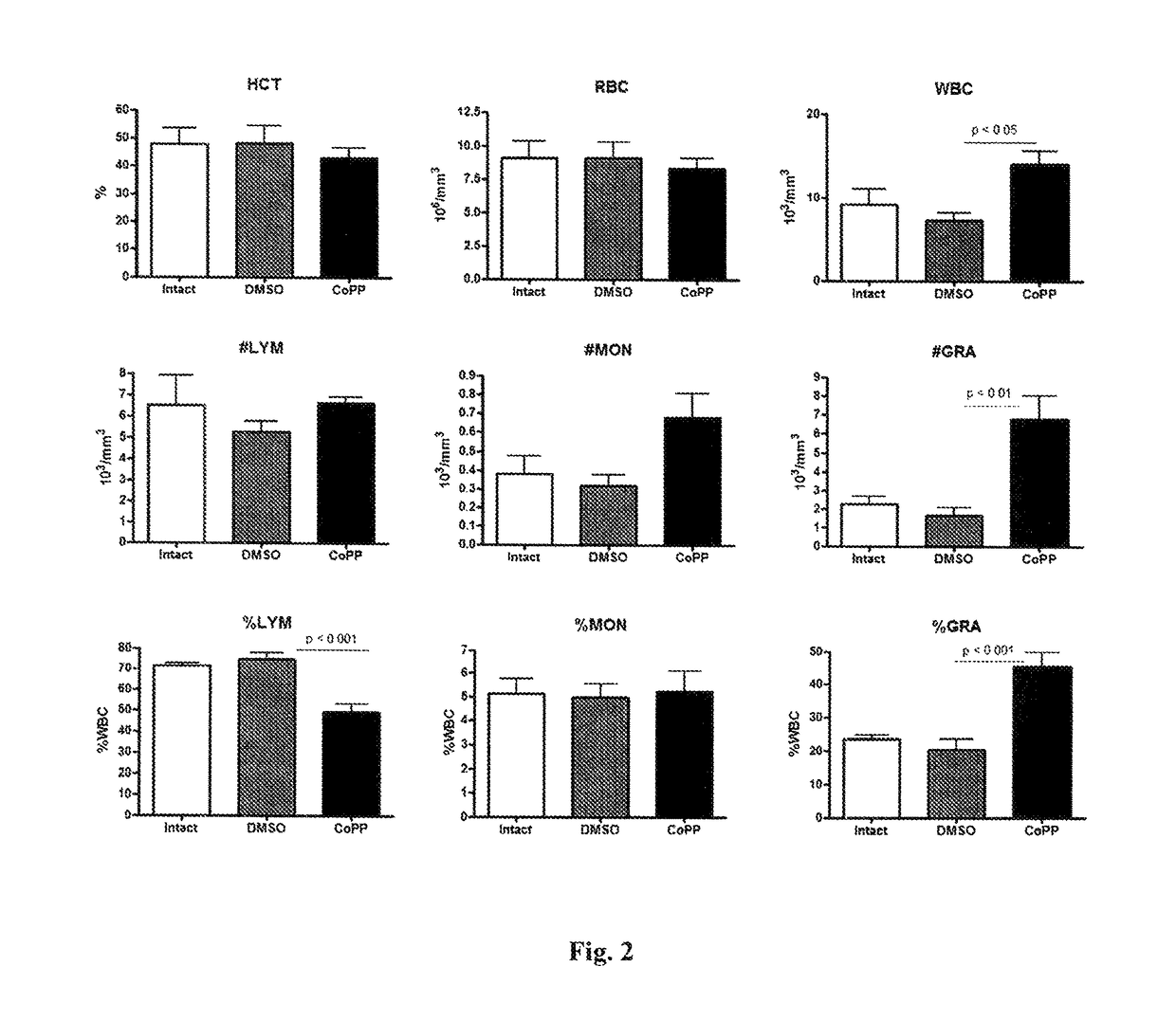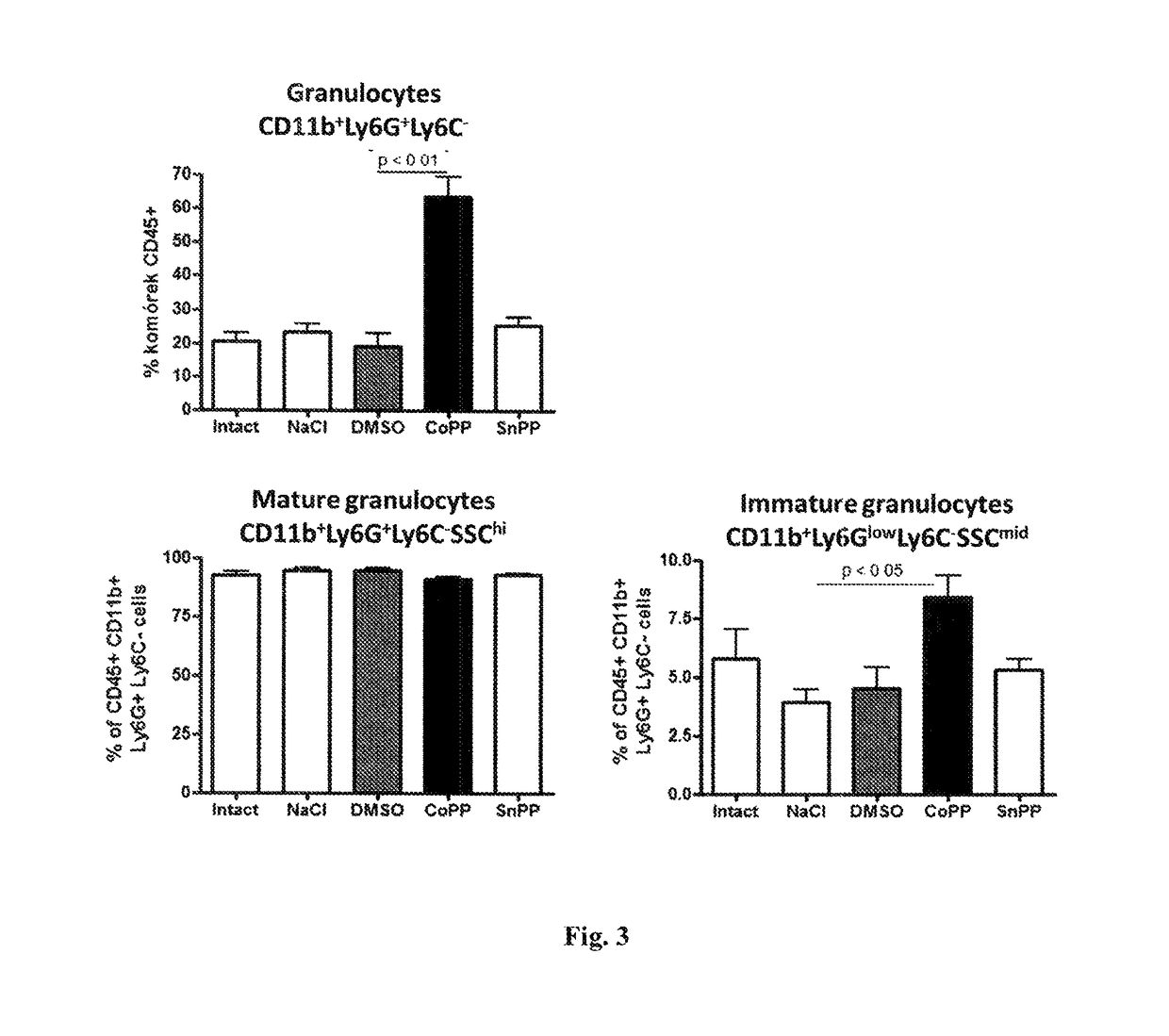Cobalt porphyrins for the treatment of blood-related disorders
a technology of cobalt porphyrin and blood disorders, applied in the field of cobalt porphyrins, can solve the problems of complicated and expensive production of such proteins, increase the risk of serious consequences of infections, and interfere, so as to improve the level of g-csf, the effect of easy and cheaper production
- Summary
- Abstract
- Description
- Claims
- Application Information
AI Technical Summary
Benefits of technology
Problems solved by technology
Method used
Image
Examples
example 1
[0025]CoPP was administered to mice intraperitoneally at a dose of 10 mg / kg of body weight, three times at intervals of two days. Control mice received only the solvent (DMSO). In one experiment tin protoporphyrin (SnPP) was also used.
[0026]The day after the last administration of CoPP the mice were sacrificed and samples were collected for analysis. Complete blood counts were obtained using a hematology analyzer. In addition, the phenotype and the quantity of leukocytes in the peripheral blood, bone marrow and spleen was analyzed in more detail using a flow cytometer. Moreover, concentrations of 32 cytokines and growth factors in plasma were analyzed. The results of analyzes indicate that mice that were treated with CoPP had increased number of white blood cells (WBC) in the blood compared to mice that received only DMSO (3-fold in C3H mice, 2-fold in C57BL6xFVB mice). In both strains, there was a significant increase in the number of granulocytes (6.7-fold in C3H mice, 4-fold in C...
example 2
[0027]The populations of leukocytes, in which the size of affected administration of CoPP, was characterized in more detail using a flow cytometer. It has been shown that the administration of CoPP resulted in the increase in the number of immature granulocytes (CD11b+ / Ly6Glow / Ly6C− / SCCmid phenotype) (FIG. 3, FIG. 4).
example 3
[0028]In order to investigate the mechanism responsible for the increase of the leukocytes (especially granulocytes) number, after administration of CoPP, the concentrations of cytokines and growth factors in the plasma were measured using the Luminex system. An increase in levels of granulocyte colony stimulating factor (G-CSF), chemokines MCP-1 (CCL2) and IP-10 (CXCL-10) and interleukin 6 was observed (FIG. 5, FIG. 6).
PUM
| Property | Measurement | Unit |
|---|---|---|
| Molality | aaaaa | aaaaa |
| Body weight | aaaaa | aaaaa |
Abstract
Description
Claims
Application Information
 Login to view more
Login to view more - R&D Engineer
- R&D Manager
- IP Professional
- Industry Leading Data Capabilities
- Powerful AI technology
- Patent DNA Extraction
Browse by: Latest US Patents, China's latest patents, Technical Efficacy Thesaurus, Application Domain, Technology Topic.
© 2024 PatSnap. All rights reserved.Legal|Privacy policy|Modern Slavery Act Transparency Statement|Sitemap



